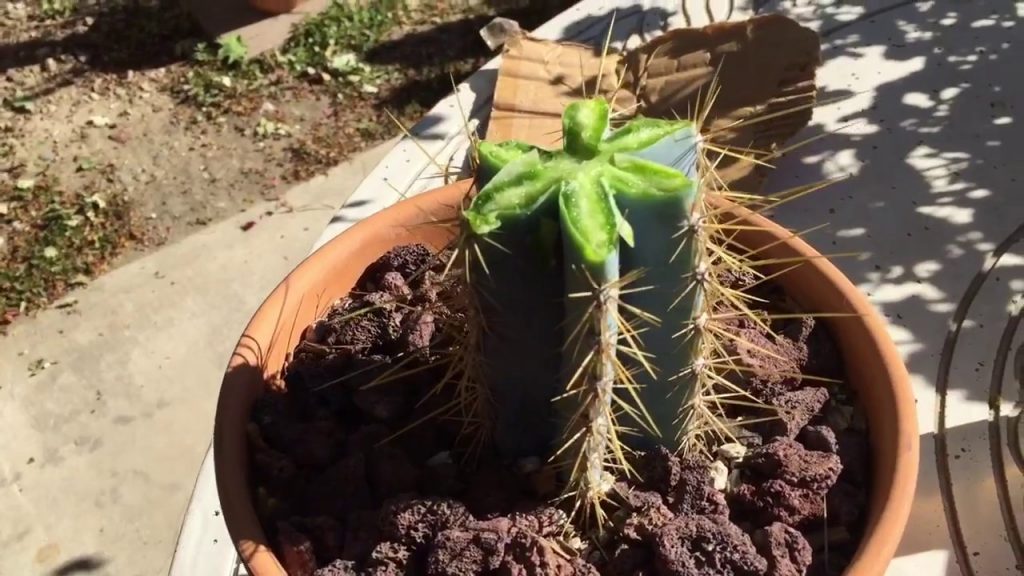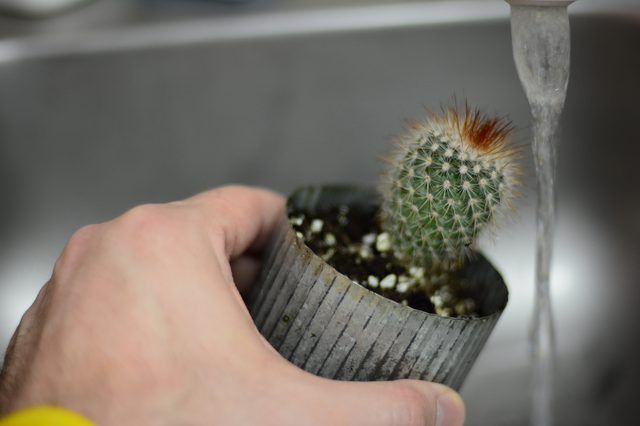Cacti are one of the most particular plant species in nature. If they are in a suitable environment they can last for many years in perfect condition, they have thorns that help them protect themselves from danger in their environment, such as drought, and they require little water, as they are succulent or succulent plants that accumulate the liquid for a long time.
However, like any plant, it can also wilt and suffer accidents that can damage it. To repair this damage, only a few simple steps are required to help the plant recover and keep it looking like new again. If you think that your cactus is wilting and you want to revive it, take note of the advice that you will see in this article because next, we will teach you how to revive a cactus.
How to revive a cactus?

Each of these types of problems makes the cactus very sick or die because it will not be able to continue growing in a healthy way. Next, we will present a series of steps that will explain how to revive a cactus in the simplest way. You are only going to require new soil, some garden tools, a pot or container and follow these tips:
Water the withered cactus with the necessary amount of water, that is, give it enough water but don’t water it. You will see that it needs irrigation if the soil is completely dry. To do this, you can sink your finger or a wooden stick in the ground two cm and check if it is dry. Also, the watering depends on the season. Normally, although it depends on the area and the climate, from March to September it should be watered twice a month, while from October to February, once a month.
Prepare new soil in case you have a rotten cactus, as you will need to remove accumulated water or have a new soil where there are no accumulated pests or diseases. It must be mixed with garden soil, peat (carbon-based material) and thick or volcanic sand so that the plant has a good drainage system, which will prevent it from drowning.
Check the environmental temperature, since cold temperatures are not good for cacti since they can deteriorate it. It is advisable to leave it in a ventilated area but that does not receive cold drafts, especially during winter.
Change it from a pot or container when it is rotten or the soil is too dry and it is even difficult to get it wet when watering it, as it will be useless soil. It is also important to cut the dead roots if you do the procedure of changing the pot because it was too dry or drowned. Also, keep in mind that clay pots contribute to the ventilation and good hydration of the plant, which is why they are the most recommended.
Use fertilizer during the busiest months of the plant, which are usually in spring and summer. It is recommended to use one that is low in nitrogen, due to the needs of the cacti.
How to know if my cactus is dead or sick?
When some environmental aspects are not adequate, such as heat or humidity, or when we have them at home and we do not cover their needs well, cacti can wilt, dry up, rot, become full of pests, weaken due to lack of sunlight or burn by the excess of it, among other aspects that can kill the plant. If this happens, you just have to pay attention to know what symptoms you have and how to solve it. Here we leave you some of the symptoms and causes of sick cacti, as well as some first ideas for their treatment:
Signs of a withered cactus
When it wilts, you will see that some of its parts are saggy, a little wrinkled or perhaps shrunken, depending on the amount of water that is needed. You will be able to check this state, when you see the potting soil, if it is completely dry and can be manipulated with your fingers, it will require water. A dry cactus, which changes its hue to brown, will require good hydration.
How to know if a cactus is rotten
You can also have a rotten cactus. You can identify it by perceiving parts of the plant that are quite black or brown, which means an excess of water or the presence of fungi that have damaged that area. It is recommended to take a scissor and cut these parts or change the soil with excess moisture, so that the plant returns to its natural state and can continue to maintain itself.
Cactus pests
Often pests come to plants to feed on them, causing damage. In cacti, this disease can be seen in bitten or gnawed parts. Also, some of these insects leave yellowish, moldy or cobweb layers on the cactus spines. These insects can be eliminated with special products, such as isopropyl alcohol.
In addition, it can be other problems such as fungal diseases, with the appearance of white spots on cacti being a clear symptom. Here we leave you more information about Why my cactus turns white.
Problems with sunlight
The excess of sunlight or the lack of it can also affect the state of your cactus, to the point of weakening or burning it. If it lacks lighting, you will see it narrower, with some pointy parts, while it has had abuse of sunlight, when you see yellow parts. For both cases, you just have to relocate the plant where it can receive the sun or receive shade in good weather.
If it is totally dry (brown or yellow and that it melts when touched) or if it is totally soft or black, surely, the cactus is dead, or almost, and it is very difficult or impossible to save it. On the other hand, if there are only parts of the cactus affected in this way or if you have a pest problem, it may be easier to revive it.
Take care for a cactus
To finish, we give you some basic tips for caring for cacti at home:
- Water the soil once a week for the first month if it is newly purchased and is in the growth phase or has been replanted to another pot where it will begin to take root.
Use a pot that has a good drainage system. - Garden soil, coarse sand and black peat are ideal for keeping the plant in good condition, because they allow it to hydrate and maintain moisture for as long as necessary, without facilitating waterlogging.
- Leave the cactus in an area that receives direct sunlight, but not throughout the day, and avoid direct sunlight during the hours when it is strongest.
- Check your health after the first few weeks. If it begins to dry, burn or rot, cut the parts that are very soft or very dry, as appropriate, and move it to a more suitable area and adjust the irrigation.
- Change the cactus pot for a bigger one when you see that it is beginning to run out of space or that its roots are showing through the drainage holes of the pot.
We hope these tips on how to revive a cactus will help you know what state your plant is in and what you can do to recover it.
You may like also to read http://aliceswonderlandnursery.com/



